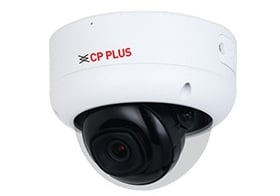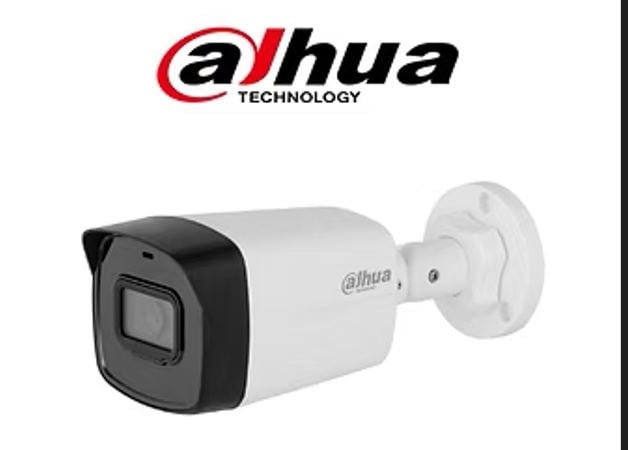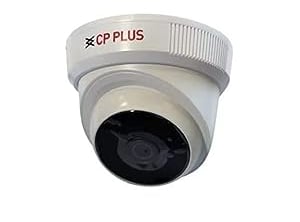CCTV Installation in Office Home and Warehouse
Mobile : 9891185422,8368971726, WhatsApp : 9891185422,8368971726
CP Plus Dome Security Camera
Dahua 2.4MP Full Color Guard+ Bullet Outdoor Security Camera
CP PLUS 2.4MP IR Dome Security Camera






Installing CCTV (Closed-Circuit Television) systems offers a wide range of benefits for both residential and commercial properties. Here are the key advantages:
1. Enhanced Securitynal activities like theft, vandalism, and burglary.
Real-time Monitoring: You can monitor your property live through mobile apps or monitors.
Evidence Collection: High-quality footage can serve as critical evidence in criminal investigations.
2. Remote Access
Modern systems allow remote viewing from smartphones, tablets, or computers, enabling you to check your property from anywhere.
3. Improved Employee Productivity (for Businesses)
Monitoring employee activities can ensure proper workflow and discourage time-wasting or misconduct.
4. Cost-effective Security Solution
CCTV systems require a one-time installation cost and minimal maintenance compared to hiring full-time security personnel.
5. Insurance Benefits
Many insurance providers offer reduced premiums for properties equipped with surveillance systems.
6. Peace of Mind
Knowing your property is monitored 24/7 enhances peace of mind for homeowners and business operators.
7. Crime Prevention in Public Areas
CCTVs in public spaces can help reduce street crimes, ensuring safer neighborhoods.
8. Access Control Integration
CCTV systems can be integrated with access control systems, providing a more comprehensive security solution.
9. Customer Safety and Trust (for Businesses)
A well-monitored premise ensures customer safety, boosting their trust in your establishment.
10. Easy Scalability
CCTV systems are flexible and can be expanded to cover additional areas as your needs grow.
Deterrence: Visible cameras deter criminal activities like theft, vandalism, and burglary.
Real-time Monitoring: You can monitor your property live through mobile apps or monitors.
Evidence Collection: High-quality footage can serve as critical evidence in criminal investigations2. Remote Access
Modern systems allow remote viewing from smartphones, tablets, or computers, enabling you to check your property from anywhere.
Step 1: Assess Your Security Needs
Determine Coverage Areas
Identify areas that need surveillance, such as entry points, driveways, hallways, or parking lots.
For businesses, consider monitoring cash registers, storage rooms, and employee workstations.
Purpose of Installation
Are you focusing on theft prevention, monitoring, or collecting evidence?
This will help decide the type of camera (e.g., dome cameras for wide-angle coverage or bullet cameras for focused areas).
Step 2: Choose the Right CCTV Cameras
Camera Types
Dome Cameras: Best for indoor use, discreet, and provide wide-angle coverage.
Bullet Cameras: Ideal for outdoor use, weather-resistant, and focus on specific areas.
PTZ (Pan-Tilt-Zoom) Cameras: Can rotate, tilt, and zoom for dynamic monitoring.
Hidden Cameras: Suitable for discreet surveillance.
Image Quality
Opt for at least 1080p resolution for clear footage.
For larger properties, consider 4K cameras for sharper details.
Night Vision Capability
Choose cameras with infrared (IR) LEDs or low-light technology for 24/7 monitoring.
Weather Resistance
For outdoor cameras, ensure they have an IP66 or IP67 rating to withstand rain, dust, and extreme temperatures.
Audio Features
Cameras with two-way audio allow communication and enhanced security.
Step 3: Decide on Wired vs. Wireless Systems
Wired Systems
Offer stable connections and are suitable for large installations.
Require professional installation due to extensive cabling.
Wireless Systems
Easier to install with minimal wiring.
Depend on Wi-Fi, so ensure a strong, stable network connection.
Step 4: Select a Recording and Storage Option
DVR (Digital Video Recorder) vs. NVR (Network Video Recorder)
DVRs work with analog cameras and are cost-effective.
NVRs work with IP cameras and offer higher image quality and flexibility.
Storage Capacity
Calculate based on the number of cameras, resolution, and recording duration.
Use external hard drives or cloud storage for longer retention periods.
Cloud Storage
Offers remote access, automatic backups, and enhanced security against tampering.
Step 5: Install the System
Positioning Cameras
Install cameras at a height to prevent tampering.
Cover all entry and exit points, including doors, windows, and garages.
Optimal Angle and Lighting
Ensure cameras face away from direct sunlight or glare.
Use motion-detection lighting to enhance night vision cameras.
Cable Management
Use conduits or cable sleeves for protection and aesthetic appeal.
Power Supply
Use uninterrupted power supplies (UPS) to keep the system operational during power outages.
Testing
Test each camera’s angle, image quality, and recording before finalizing installation.
Step 6: Integrate with Smart Devices
Mobile Apps
Choose a CCTV system compatible with apps for real-time viewing and alerts.
Smart Home Systems
Integrate with systems like Alexa or Google Assistant for added functionality.
Step 7: Maintain the System
Regularly clean lenses and check for obstructions.
Ensure software and firmware updates for security and functionality.
Periodically test recording and backup systems.
Type Of Cameras
1. Dome Cameras
Description: Compact, dome-shaped cameras.
Features:
Wide-angle view.
Discreet design.
Often vandal-resistant.
Ideal For:
Indoor use (offices, retail stores, and homes).
Areas requiring a broad field of view.
Example Applications: Monitoring lobbies, reception areas, and hallways.
1. Dome Cameras
Description: Compact, dome-shaped cameras.
Features:
Wide-angle view.
Discreet design.
Often vandal-resistant.
Ideal For:
Indoor use (offices, retail stores, and homes).
Areas requiring a broad field of view.
Example Applications: Monitoring lobbies, reception areas, and hallways.
2. Bullet Cameras
Description: Long, cylindrical cameras.
Features:
Long-range viewing.
Weather-resistant (suitable for outdoor use).
Easy to spot, acting as a deterrent.
Ideal For:
Outdoor areas like parking lots, building perimeters, and driveways.
Focused monitoring on specific points.
Example Applications: Watching entrances or exit gates.
3. PTZ Cameras (Pan-Tilt-Zoom)
Description: Motorized cameras that can pan (move horizontally), tilt (move vertically), and zoom in/out.
Features:
Remote control capabilities.
Can track moving objects.
Wide-area coverage with zoom-in details.
Ideal For:
Large areas like warehouses, stadiums, or public spaces.
Situations requiring live monitoring by a security team.
Example Applications: Surveillance at events or tracking suspicious activity
4. Wireless Cameras
Description: Cameras that transmit video wirelessly to a receiver or cloud storage.
Features:
Easy installation with minimal cabling.
Portable and flexible.
Ideal For:
Homes or small businesses with Wi-Fi access.
Contact
© 2025. All rights reserved.
Managed Firewall Services Managed IT Services Video Conferencing CCTV & Surveillance Solutions Biometric Installation Printer services
Complete Office Interior Design & Execution Modular Workstation & Furniture Setup Electrical & Cabling Setup for Infrastructure Meeting Rooms, Reception, and Training Rooms Setup Ergonomic Seating Arrangements (Chairs, Desks, Conference Tables)
Business Antivirus Email Security Mobile Device Management Endpoint Protection Data Loss Prevention Network Security Disaster Recovery & Backup
Office Network Setup (LAN, WAN, Wi-Fi, VPN) Structured Cabling & Rack Installation Router, Switch & Access Point Configuration Network Troubleshooting & Optimization Secure Remote Access Solutions
Endpoint Antivirus Bitdefender Seqrite CrowdStrike Antivirus Trend Micro Antivirus Sophos InterceptX Quickheal Antivirus
Business Laptop Business Printers Network Firewall Routers & Switches Servers & Racks Biomatrices Machine UPS & Power
📞+91-9891185422 📧contact@officesolution.co.in
🏢 Uttam Nagar, New Delhi, Delhi, 110059, India
Connect us on Social Media
☎️
Sales Helpline +91-9310189462
Have a question?
OfficeSolution Services is your trusted partner for IT solutions, cybersecurity, and office setup.We provide end-to-end IT support—from laptops and desktops to networking, cloud, and firewall security.Our experts design modern office interiors with smart infrastructure and ergonomic furniture.From CCTV installation to managed IT services, we deliver custom, affordable solutions
